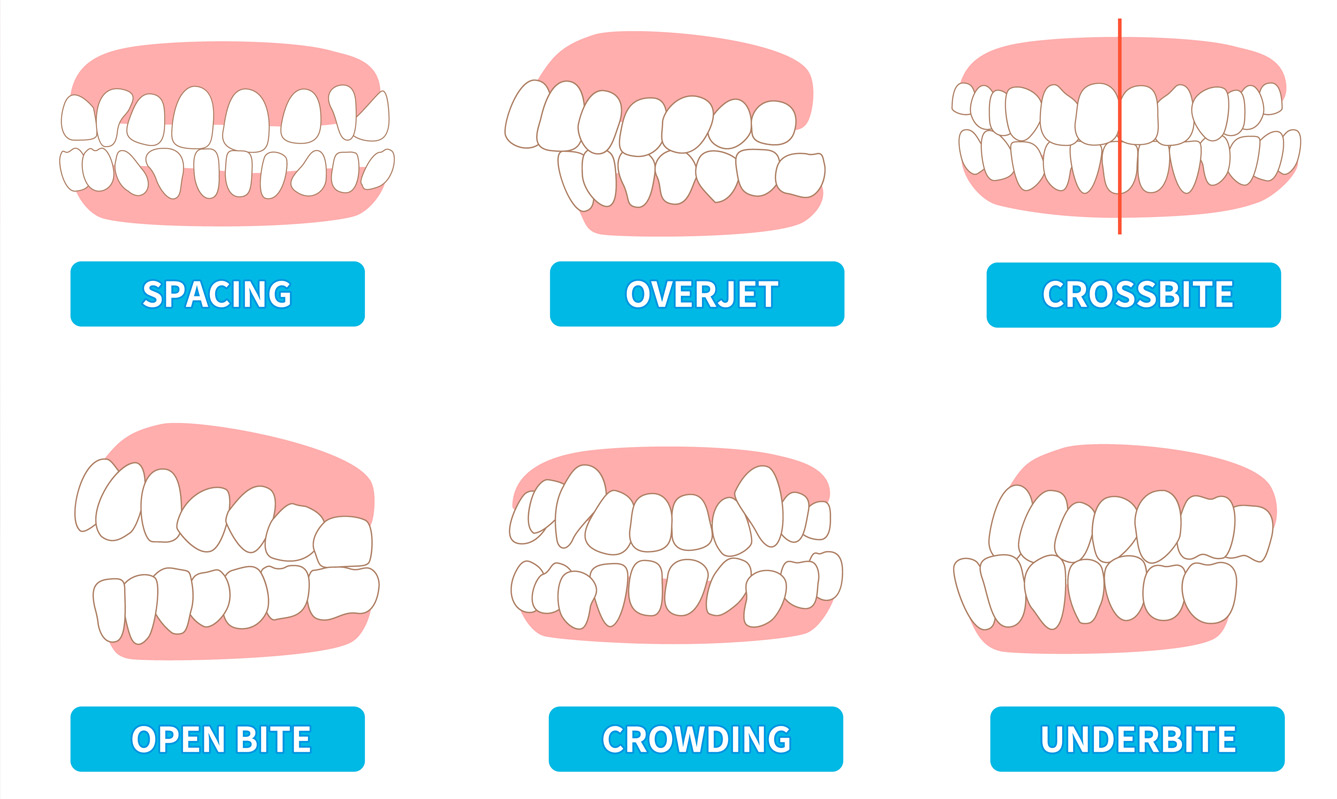If you go to the dentist regularly, you have probably heard the term “malocclusion” thrown around quite often. But what does it actually mean? Simply put, a malocclusion is the medical term for any disruption in the alignment of your teeth. Some malocclusions are relatively benign, while others can lead to jaw pain and pain while eating or digestive issues by altering your bite. It’s important to identify malocclusions early before they and their associated symptoms become more severe.
Malocclusions are classified based on their impact and type. Misaligned teeth are divided into three classes, each more severe than the last. These classes are then subdivided by teeth bite types depending on the position of your teeth. There are also certain names you will hear associated with specific malocclusions. For example, the common terms “overbite” and “underbite” describe what are known as a Class II and a Class III malocclusion types.
Types and names
Though overbite and underbite may be the most well-known bite types in conventional knowledge, there are a number of other named malocclusion types. For example, a cross bite refers to a malocclusion that results in the upper teeth biting inside the lower teeth. Additionally, an open bite refers to a bite where the top and bottom front teeth do not meet or overlap.
Different malocclusion types result in different symptoms like issues with spacing or crowding, and may even impact your ability to speak, chew or breathe properly. Some malocclusions are harmless, but the ones that aren’t can have devastating effects. That’s why it’s so important to catch and correct malocclusions before they get out of hand.
The right type of treatment
Whether you believe you have a normal bite or not, it’s always best to visit a qualified dental specialist annually to confirm your teeth are in top shape. If you’re not sure where to search for quality assessment and care, look no further than Dr. Mario Paz, DDS. He and his team are well equipped to diagnose various malocclusions and address a wide range of bite types. They can treat many malocclusions in house, or refer you to a surgical orthodontist in the event that more aggressive treatment is necessary. Call today to find out more.
